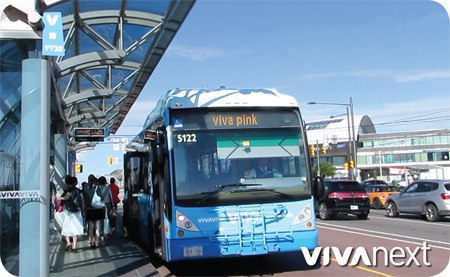One of the great things about huge events like the Pan Am and ParaPan Am Games is seeing how people adjust to the changes the event brings. Leading up to the Toronto 2015 Games, there were some concerns that the Games would cause severe traffic congestion. But thanks to some extra emphasis put on transit and carpooling across the GTA, people have been exploring other choices in how to get around. This, in turn, has likely helped reduce traffic congestion. Whether it’s taking transit, bicycling or carpooling to make use of HOV lanes, every little bit helps.
It’s a shift that takes some getting used to, adjusting to a new routine using a new mode of transit. And it’s this “modal shift” that is so important when developing transit for a growing community.
Most days of the week, many of our roads and intersections are at capacity or beyond. They’re not going to get any less congested as our cities and regions continue to grow, and since there’s limited space in the GTA for roads, there are really only two ways to address congestion.
The first way involves road design, traffic signals and traffic detection systems – known as Intelligent Transportation Systems or ITS, York Region uses this approach to make our existing roads better.
The other approach, which is known to traffic engineers as transportation modal shift but to everyone else as reducing our reliance on cars, is probably the best long-term strategy to reduce traffic congestion. Modal shift means cutting down on the number of trips made by one form of transportation by shifting to other forms of transportation, including transit, cycling or walking.
Modal shift may sound a little technical, or maybe it’s hard to imagine – as if people would get out of their cars all at once and climb onto buses and trains. But really it’s just a matter of small changes in behaviour: taking the bus to the GO station or subway every now and then; carpooling with your co-worker; walking to the convenience store instead of driving; helping the kids bike to school instead of giving them a ride. All great ideas that the people at Smart Commute and Pembina Institute advocate for.
For successful modal shift, major infrastructure and land use decisions need to be in place, followed-up by investments. Transit needs to be convenient and reliable; shops and schools need to be within reasonable walking distance; there need to be bike lanes; and jobs need to be located near housing.
Fortunately, all of the long-term decisions and investments that will eventually encourage and enable more people to reduce their reliance on cars are already underway in York Region. Modal shift away from cars will be able to happen because people will be offered easier, more convenient and reliable ways to get around.
A gradual shift toward other modes of transportation will reduce congestion on our roads. It’s a long-term process, requiring patience, careful planning, and commitment. It’s also a big part of the vivaNext vision, and with every rapid transit project we build more transportation choices, and the vision becomes an exciting reality.

